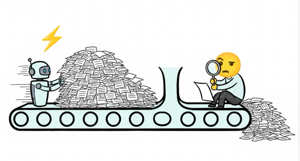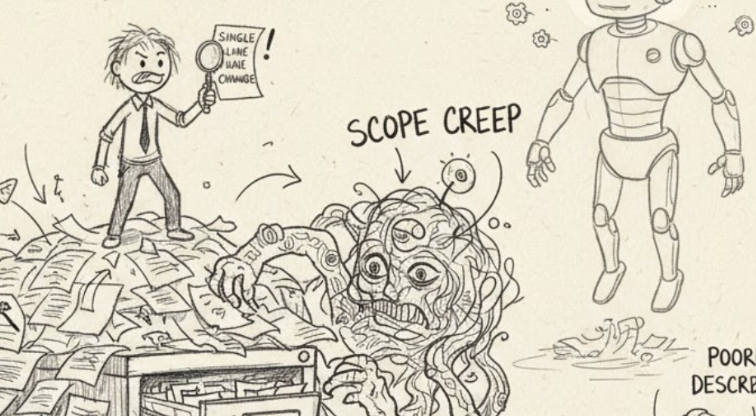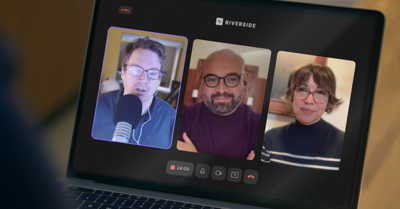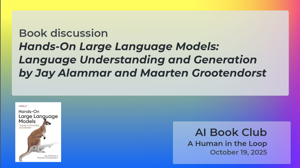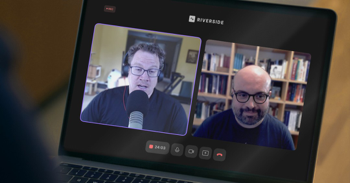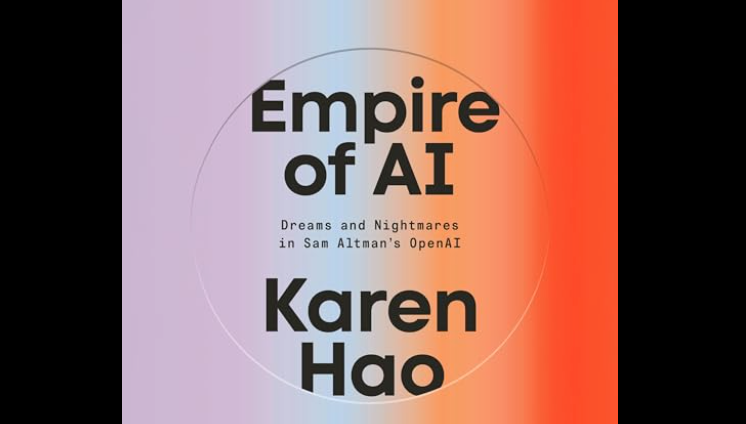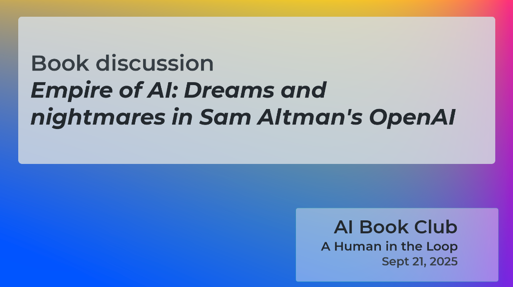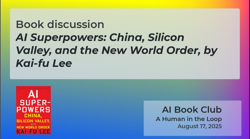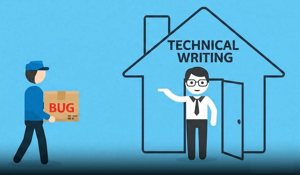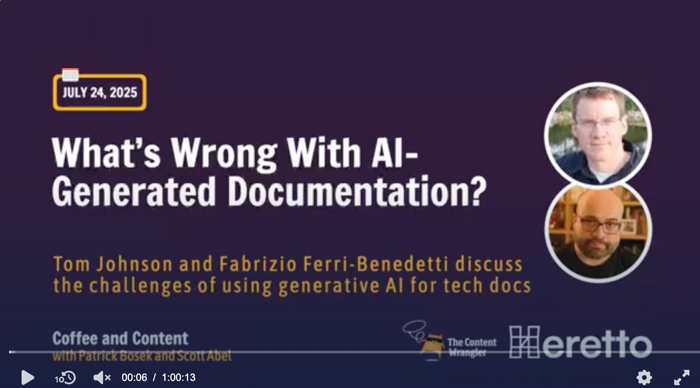The most frequent story told about AI is that it will free us up from mundane tasks and allow us to focus on more impactful, strategic work. But the liberation part of that story might be misleading. In this post, I argue that AI's true effect is to accelerate the entire competitive landscape, increasing the pace of work for everyone. In this new, sped-up world, companies that replace human workers with AI for short-term gains, assuming that the pace of change is static, may find themselves falling behind in the long term.
I recently listened to How AI Is Changing Writing — with Tony Stubblebine from the Big Technology podcast, hosted by Alex Kantrowitz. This was one of the more interesting and relevant episodes for me. I embedded the interview below and also added my own summary of the important points and my analysis.
The basic idea of doc bug zero, as I explained in Defining bug zero, is to clear out all the tickets in the doc issue queue, essentially to finish all your documentation work. Doing so would be the ultimate statement about the productivity gains from AI. Despite my attempts to get to bug zero, it still eludes me. I'm realizing that there's an art to working through a bug queue, and AI can only take me so far. Good project skills are also needed. One of those skills, which I'll address in this post, is making it easy for people to review the changelists, or pull requests. (The terminology used in my area of doc work is changelists, or CLs, so that's how I'll refer to them here.)
In this podcast episode, Fabrizio Ferri-Benedetti and I chat with guest Anandi Knuppel about MCP servers and the role that technical writers can play in shaping AI capabilities and outcomes. Anandi shares insights on how writers can optimize documentation for LLM performance and expands on opportunities to collaborate with developers around AI tools. Our discussion also touches on ways to automate style consistency in docs, and the future directions of technical writing given the abundance of AI tools, MCP servers, and the central role that language plays in it all.
This is a recording of our AI book club discussion of Hands-On Large Language Models: Language Understanding and Generation by Jay Alammar and Maarten Grootendorst, held Oct 19, 2025. The book differs from other books in the series in that it's a more technical exploration of how LLMs work, without any ethics discussions. It's less narrative and more engineering-oriented. Our discussion focuses on understanding of conceptual details and whether, to use an analogy, understanding the plane's engine helps pilots fly the airplane better.
After using the Commento commenting service on my blog for about 5 years, I've decided to remove it. The vast majority of comments were already happening on LinkedIn, so I'm embracing that platform for discussions going forward.
In this conversational podcast, Fabrizio Ferri-Benedetti (Passo.uno) and I talk about the impact of AI on the technical writing profession. We tackle the anxiety, seen and felt almost everywhere, but especially on Reddit, within the community about job security and analyze the evolution of the technical writer's role into a more strategic context curator or content director. We also cover practical applications of AI, such as using agents markdown files to guide language models (with style overrides or API reference contexts), and the role documentation plays in improving AI's outputs (Fabri's phrase AI must RTFM).
This past year in the tech comm community, there's been a lot of angst about job security with AI. In this post, I argue that our roles are shifting from writers to content directors. In this new role, the skills we need for success are two-fold. I propose that we focus on developing (1) deep subject matter expertise and (2) tools expertise. I also share my optimistic view about why technical writers will remain essential in a future with ever-expanding technology. The tldr for that argument is that even as AI might remove some jobs, the exponential growth of tech will create more opportunities and needs for documentation. Additionally, the accuracy of AI tools highly depends on the quality of the documentation.
In my AI Book Club, we recently read Empire of AI: Dreams and nightmares in Sam Altman's OpenAI, by Karen Hao. In this post, I'll briefly share some of my reactions to the book. The main focus in my review is to analyze Hao's treatment of the mission-driven ideology around AGI that explains many of the motivations for the workers at OpenAI and similar AI companies.
This is a recording of the AI Book Club discussion about Karen Hao's Empire of AI: Dreams and Nightmares in Sam Altman's OpenAI. The discussion is an informal, casual discussion with about half a dozen people online through Google Meet. You can also read a transcript and other details about the book here.
In my previous post about achieving bug zero, I introduced the goal and some motivations for it, but I didn't fully articulate the whole connection to AI. I also didn't explain much of what a doc bug queue is in my context, or why it even matters. In this post, I'll define doc bugs in more depth and explore two major obstacles to accelerating documentation work: review time and context gathering.
This is a recording of our AI Book Club session discussing Kai-Fu Lee's AI Superpowers: China, Silicon Valley, and the New World Order. There are 4 people in this book club discussion, and our conversation focuses on the emerging AI duopoly between the US and China. We share our own US-centric blind spots and weigh the political and cultural implications of China potentially winning the AI race. We also talk about Kai-Fu Lee's prediction of mass job displacement and his proposed social investment stipend, questioning both its feasibility and its potential drawbacks. The discussion also explores how our own professional roles, particularly in tech comm, might evolve to manage and direct AI rather than be replaced by it, and how surprisingly relevant the book feels today despite being published in 2018.
In the pursuit of bug zero, it helps to identify different types of bugs and the right strategies for dealing with each of them. In this post, I explore four common types of complex bugs I've encountered: Russian-doll bugs, scope-creep bugs, non-actionable bugs, and wrong-owner bugs.
I recently appeared on the Coffee and Content episode, hosted by Scott Abel, with another guest, Fabrizio Ferri-Benedetti, who writes a blog at Passo (passo.uno). The episode theme comes from a post Fabrizio wrote titled What's wrong with AI-generated docs, but the episode didn't focus exclusively on AI's problems and gotchas so much as AI strategies with documentation in general. This post provides a recording and transcript of the episode.
This post is my review of Parmy Olson's Supremacy: AI, ChatGPT, and the Race That Will Change the World. Among many possible AI topics, I focus on the sellout aspect of the book, comparing the AI entrepreneurs' sellouts to big tech to fund their massive compute needs to the sellout decisions that creative writers make to tech companies in exchange for liveable salaries.


